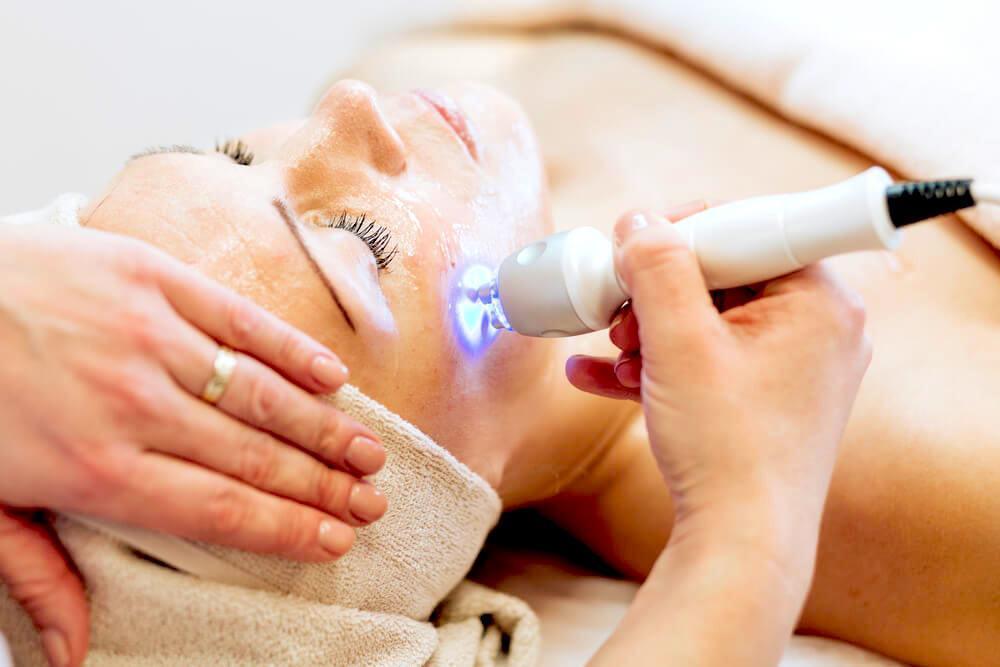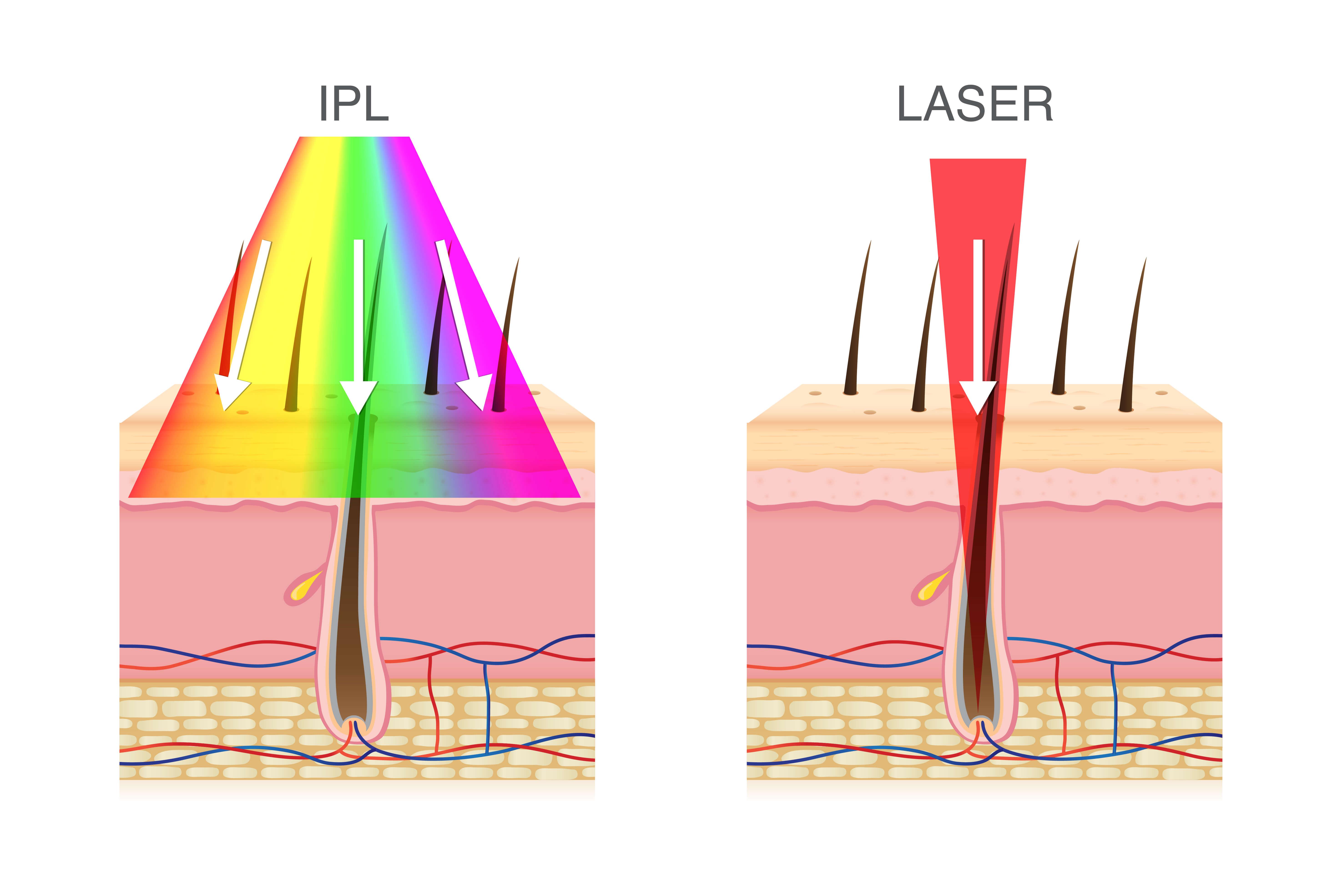The quest for beauty has given rise to numerous treatments and procedures. From topical creams to exfoliating soaps, abrasive devices to invasive therapies, there is no limit to how far you can go. Nevertheless, these beauty therapies pale in comparison to laser treatments. Apart from being effective in treating various skin conditions and helping you achieve a more youthful look, laser treatments are fast gaining popularity.
Celebrities like Jennifer Aniston and Kim Kardashian have actually come out in support of these often costly treatments. Aniston, currently in her early 40s could easily pass for a 30-year old and this she attributes to laser treatments– which she actually admits being addicted to. To understand what the craze is all about let’s look at Laser treatments: What they are and what they do.
What are Laser Treatments?
Laser is an abbreviation that stands for Light Amplification by Stimulated Emission of Radiation. When used in medical procedures, lasers make use of short-pulsed concentrated light beams to treat a wide range of conditions.
Lasers allow a high degree of precision since light can be focused on a small area which eliminates the danger of damaging on the surround areas. This allows lasers to be used more safely in surgical procedures and beauty therapies. These treatments can take anywhere between half hour to several hours depending on the specific condition that is being targeted.
Skin Conditions That Can Be Treated Using Laser
- For skin lightening and rejuvenation, lasers are used to treat unwanted, irregular or damaged skin. Also known as laser resurfacing, these procedures improve the appearance of wrinkles, acne marks, blemishes, age spots, birthmarks and hyperpigmentation brought about by melasma, liver spots and chloasma; simply put, your skin get to shed a few years and probably a few shades.
- Lasers are also used for more specialized medical conditions, these include; removing kidney stones, removing parts of the prostate, treating nerve pain, improving vision, repairing a detached retina and treating varicose veins.
- Loss of hair to due to alopecia (hair falling out in small patches) can also be treated using lasers. Light therapy is used to target the infected hair follicles allowing healthy cells to take over. These treatments can be done on eyebrows, eyelashes, the scalp or other body parts.
- Laser treatments are also good cauterizes, these makes them effective tools during and after surgery. They are used to seal nerve endings, blood vessels, and lymph vessels.
- Alongside other treatments such as chemotherapy, lasers are used to treat early stages of some cancers such as; penile, vulvar, skin, vaginal and cervical cancers.
- Apart from skin lightening, lasers also come in handy when dealing with other cosmetic conditions: They can be used in removal of hair, tattoos, warts, moles, undesirable birthmarks as well as to whiten teeth.
How Laser Treatments Are Performed
With skin resurfacing, a concentrated pulsating beam of light is directed at a small area of the skin. The energy from the beam vaporizes skin cells that are damaged at the surface-level to remove the specific blemish or discoloration. This beam’s wavelength is adjusted according to the specific skin condition that is being treated.
On the other hand, lasers used for hair removal are directed at the hair where energy is absorbed by melanin; the beam can also be directed past the skin surface to the hair follicles where upon absorption it vaporizes the hair from the root up.
For hair removal, the candidate for the treatment should ideally have hair that is darker than the skin; this allows the laser to target the melanin in the hair and not the pigment in the skin.
Types of Laser Therapies
There are three major types of lasers used for skin lightening and medical conditions. The choice usually depends on your doctor, who determines which laser will best work for your condition.
1) Ablative Laser Resurfacing
This is a new range of lasers that deriver short pulsating light energy to the skin. They are considered to be one of the most effective treatments for the skin. They target the top most layer of the skin where they remove aged or photo-damaged skin. Ablative lasers also help in stimulating the underlying layers to produce more collagen, which is good for the skin.
These lasers come in several types:
- Carbon dioxide (CO2) laser: This laser uses a gas based mixture to burn of and evaporated unwanted tissue. The procedure is usually a one-off hence you need a qualified doctor to recommend and perform it. It delivers significant results but is associated with some side effects like redness and swelling that can last for about 10 days.
- Erbium Laser Resurfacing: An ablative laser that uses Erbium doped solid-state beams to scar the skin in a controlled manner. This induces the skin to heal, giving way to new cells. It works best on surface-level wrinkles and has fewer side effects compared to CO2 lasers.
2) Non-ablative Laser Resurfacing
These types of lasers penetrate the inner dermal layers without damaging the outer surface. The heat from the lasers curdles the affected tissue which tightens the skin while stimulating collagen production at the same time. Non-ablative procedures take shorter time to heal than ablative ones; however a number of sessions might be required before the desired results are achieved.
3) Fractional Skin Resurfacing
Fractional lasers use a combination of both ablative and non ablative techniques. This approach ensures improved efficiency, minimized risk and lesser downtime. Tiny beams of energy are directed through the skin layers to target affected cells or tissues.
4) IPL Lasers
IPL stands for Intense Pulsed Light. These types of lasers use several wavelengths of light to carry out skin resurfacing or other surgeries.
The ability to alternate wavelengths allows IPL lasers to be used on different skin types and to treat varying conditions. IPL differs from traditional lasers in that it uses broad-spectrum light in the visible range as opposed to laser beams. It’s also cheaper and the sessions are shorter.
Do They Work?
The use of lasers to treat various conditions including aesthetics is well researched and documented. These treatments have been found to not only work but are safe. If you are looking to undergo these treatments, it helps to know that clinical trials support their efficacy:
- A study by the Hacettepe University Faculty of Medicine, Turkey, found Fractional carbon dioxide laser to be effective in acne treatment. In the trial involving 31 participants, over 70% of the participants had mild to significant improvement of their acne spots. The treatment was also found to have held in more than half of the participants 3 years down the line.
- A comparative study on the efficacy of CO2 verse Erbium–based lasers in treatment of facial blemishes arrived at results in favor of both treatments. When it comes to side effects, the research found that ‘there was no serious long-standing adverse effect after both laser treatments’.
- A clinical study on the effectiveness of non-ablative laser resurfacing showed that the treatment is effective. This was study carried out by Mount Sinai St. Luke’s University, New York. Non-ablative laser was found to be ‘safe and efficacious’ in the treatment of acne scarring.
Recovery Time and Results
The time it takes to recover after laser treatments depends on the condition that is being treated and the type of laser used. That said you can expect some downtime just like you would when coming from a normal surgery.
Simple treatments may require a few days to settle down while major ones may need 7 to 21 days. Your doctor may recommend a few days of rest. This will allow the redness and possible swelling to subside before you go back to your normal routine.
Immediately after the skin treatment you should expect some stinging which can last up to 72 hours. Your skin will become dry and start peeling off as it heals.
You may also be given a topical cream or ointment to apply. This helps in sealing pores, providing protection from UV rays and keeping infections at bay.
Full facial treatments can develop blisters and pus which can lead to scabbing, to avoid this you may be required to dress with an ointment as the skin heals. The scabs should however be left in place since the growth of new skin will false the old and damaged one to peel of naturally.
Here are some guidelines to follow during recovery from skin resurfacing;
- Mild pain can be treated with OTC pain medication
- Applying petroleum jerry will help in avoiding dryness and itches
- Ice packs can be handy in dealing with mild inflammation
- DO NOT pick scabs
- Clean using plain clean water
On the issue of using make up, you should have your doctor advice on what to or not to use. Some topical creams can contain toxic ingredients which may lead to adverse side effects thus slowing down the healing.
Are There Any Side Effects?
To start with, extensive laser treatment may call for you to be put under general anesthesia. This could result in pneumonia and some degree of confusion upon waking up.
Laser skin resurfacing carries some risks especially if done by an unqualified practitioner. Some of the side effects that you can expect include;
- Scarring
- Raw and reddish skin
- Mild pain- countered by a numbing agent applied before the surgery
- Irregular coloration- brought about by excessive sun exposure before or after the treatment
- Blindness from the laser -avoid this by wearing the goggles that you will be provided with
Sessions Required and Frequency
While the treatment can take as little as 30 minutes, you require a series of treatments for the desired results. For example when using non ablative lasers for hair removal you can expect 5 sessions to do the trick. On the other hand, ablative lasers will get rid hair in one or two widely spaced sessions.
Laser resurfacing also requires one or two sessions yearly for a smooth, flawless and youthful skin. While the results are long lasting, follow up treatments are necessary. This helps in dealing with any adverse side effects; your doctor may outline a cause of action that combines several therapies including antibiotics, creams and collagen induction.
The Benefits of Laser Treatments
- Faster results: Compared to other treatments, lasers provide faster results. In the case of skin resurfacing, a week is sufficient time for noticeable skin improvement. The results may not be noticeable right after the treatment but immediately the redness or scarring disappears your skin will be glowing.
- Professional procedures: These treatments are carried out by trained professionals. Therefore, quality care and advice is ensured. This leads to use of right techniques or combination of therapies to treat even the severest of conditions.
- Appropriate for different skin types: The fact that lasers can be adjusted to emit different wavelengths makes them invaluable tools; they can be used safely to target different medical conditions as well as work on different skin colors.
The Cons of Laser Treatments
Lasers could the skin saviors that you have been looking for. These ‘light’ emitters however come with a couple of drawbacks, such as;
- They are expensive
- Requires a recover period (unlike creams)
- Potential for adverse side effects
The cost
Statistics show that laser treatments’ cost ranks highest when it comes to non surgical cosmetic procedures. In the US, ablative laser skin resurfacing tops the list at $2,560, with fractional ablative resurfacing costing about $1,236. Hair removal averages at $457 and IPL laser treatment at $342.
That said, it’s important to note that these are average prices meaning the price may go up or down; depending on severity of the condition, size of the area being treated, number of sessions required and the kind of after-care required.
The Takeaway
Laser treatments are innovative ways to improve the condition of aged or sun-damaged, or hyperpigmented skin. Lasers are also used in treatment of a wide range of medical conditions. In the hands of trained practitioners or doctors, these treatments are safe and effective. However they are also costly and they come with the risk of several side effects as outlined above.
As a precaution, consult your doctor (get a second opinion if you wish) before trying any laser treatment. If you decide to go for it, then follow all the necessary precautions both before and after the procedure.










Leave A Comment